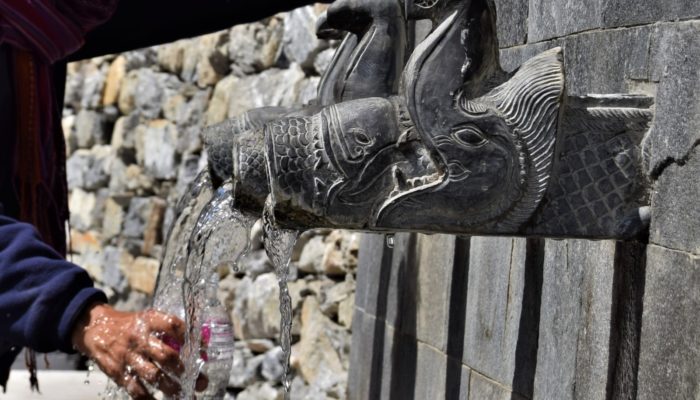
How much water do you think you’re using? When you eat 200 g of beef, you are using more than 3,000 liters of water. Regular blog author Bárbara Zambelli helps us understand how we can alleviate climate-change-related water stress in countries around the world, just through our choices of consumption. [Editor’s note: This post reflects Bárbara’s personal opinions. These opinions may not reflect official policy positions of Geology for Global Development.]
This month our blog theme is resources, and I chose to write about water, not only because it is our most basic need but also as it is the basis of all goods, products and resources that we use.
Freshwater, like any other natural resource, is unevenly distributed on Earth’s surface, leading to physical scarcity in many parts of the globe, while other regions are suffering from floods and heavy rain events. So, we have to deal with water scarcity problems every time that water is too little, too much or too dirty.
The largest share of water is used in agriculture and industry, whilst direct uses (such as drinking, cooking, bathing, cleaning and so on) are responsible for only a small amount
Another reason to be alert is that, according to the Organization of Economic Cooperation and Development, 47% of the world’s population will suffer from water shortage by 2030. In this article, in order to better discuss sustainable water usage, I want to explore some important concepts in the following paragraphs.
Virtual water is the first one: it is related to indirect water used for different purposes, such as growing crops, energy production or transportation. Let’s take an example from food production – Do you know how much water is necessary to produce 1 kg of beef? The global average is about 15,400 L/kg.
On the other hand, to produce the same amount of vegetables, only 322 L are needed, for cereals 1,644 L/kg and for milk 1,020 L/kg. With that in mind, do you feel you really know your own water consumption? Would you like to find out? In this link, you can calculate your water footprint.
Here we come to the second important concept: water footprint. A water footprint reveals water consumption patterns, from individual to national level, communicating its expenditure in the manufacturing and production of goods. In addition, it reports the amount of water contaminated during those processes.
When a country is exporting some product (cereals, vegetables, oil, ores, clothes, technology and so on), it is also exporting virtual water needed to produce that product.
If we take a look at a list of highest water footprint by country, the United Arab Emirates leads the way, followed by the U.S. and Canada. Brazil appears at number 6.
It is important to point out that nowadays the largest share of water is used in agriculture and industry, whilst direct uses (such as drinking, cooking, bathing, cleaning and so on) are responsible for only a small amount. On this website, you can find many more interesting statistics about virtual water.
Another important concept is the international virtual water trade flow. When a country is exporting some product (cereals, vegetables, oil, ores, clothes, technology and so on), it is also exporting virtual water needed to produce that product.
Big virtual water exporters are most of the Americas, Asia, Australia, and Central Africa while big importers are in Europe, Japan, North and South Africa, the Middle East, Mexico, and Indonesia.
One problem related to this trade happens because the indirect effects of water exploitation are externalized to other countries. Moreover, consumers are generally not aware and do not pay for the water problems in the overseas countries where their goods are being produced.
So, how can we take action, at an individual level, to reduce our water consumption and, at the same time, tackle climate change?
First of all, we need to think outside the box. Reducing water consumption means way more than closing the tap while brushing your teeth. We need to re-think our lifestyles, diet, our choices for daily commutes and more.
A good start would be cutting off meat one day of the week (meatless Monday, for example). Instead of buying new clothes every year, look for some in second-hand shops, flea markets or swap with friends. Choose public transportation or bikes over private cars. When you need to shop anything, always check for local products instead of imported ones. Overall, always be a conscious citizen!
**This article expresses the personal opinions of the author (Bárbara Zambelli). These opinions may not reflect an official policy position of Geology for Global Development. **

Antônio JR
Amazing, thanks for sharing